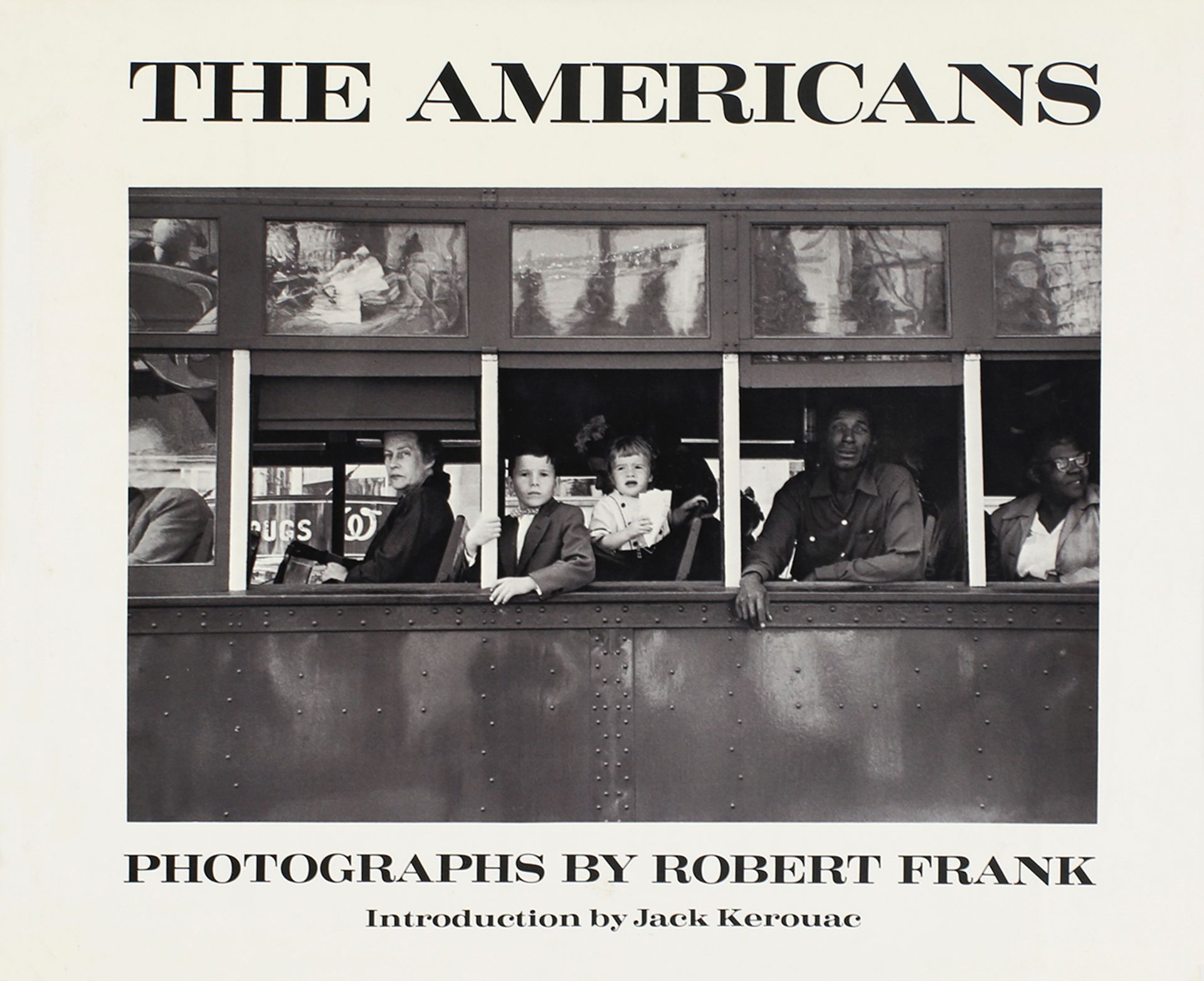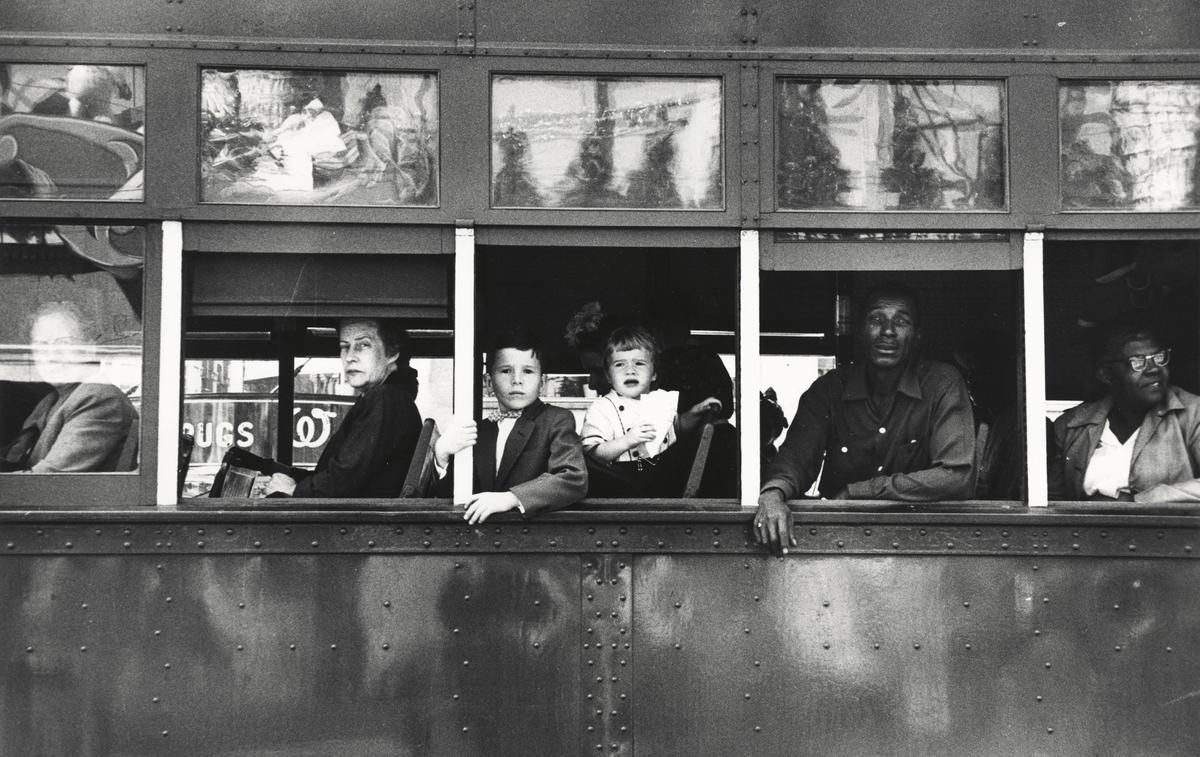A new edition of Robert Frank’s The Americans is due to be published by Aperture after the New York nonprofit publisher received a $1m endowment grant from a foundation the photographer set up for his late daughter, it was announced today.
The new edition of the seminal photobook will be created from scans of Robert Frank’s own original prints, and will be published in 2024, on the centennial of Frank’s birth. Aperture last published an edition of The Americans in 1968—the book is currently out of print.
Frank's daughter, Andrea, died in a plane crash in Guatemala in 1974, aged 20, inspiring Frank and his wife, June Leaf, to set up a foundation in her memory, The Andrea Frank Foundation. The foundation today announces a raft of matching grants across 15 American photography organisations including Aperture, and totalling $2m.
The Americans is considered a lodestar for a whole generation of American documentary photographers, from the 1960s through to the current day, who set out to capture the soul of the nation through their lens.
The publishing program endowment has been overseen by Sarah Meister, the former long-term photography curator at MoMA New York, who took over as Aperture’s executive director in May of this year. "Robert Frank helped us see ourselves more clearly and critically," Meister tells The Art Newspaper. "This new edition will respect and honour that."
Photographers from successive generations, from Garry Winogrand and Lee Friedlander to Bruce Davidson and onto a new generation of photographers today, among them Khalik Allah, Hannah Price and Colby Deal, all pay homage to Frank’s conceptual creation of street photography.
His book, first published when Frank was 34, was the result of a now legendary years-long road trip the Swiss-born Frank undertook across America after receiving a Guggenheim Grant in 1954.

Cover of The Americans (Aperture/MoMA, 1968), courtesy of Aperture
In his original proposal to the Guggenheim, Frank wrote: “The photographing of America is a large order—read at all literally, the phrase would be an absurdity.”
Some of the images contained in the book, like the perfectly mirrored Black and white faces looking at him from the symmetry of a segregated bus, are now amongst the most iconic images of the last century, remembering an America that existed in living memory, but before the Civil Rights Movement.
The Americans remains as relevant today as it did in the 1950s, Meister says.
“The aspects that Frank captured of America, in terms of the pain and complexity of race relations, as well as demonstrations of allegiances that are merely symbolic, tragically feel incredibly relevant today,” Meister says.
“He captures a sense of alienation, of suspicion, that exists in America today. These were characteristics of the United States that Frank was capturing in the mid 1950s—but have not dissipated,” she adds. “They may have changed their form. We may conceive of them in new ways. But I still learn how to see America when I look through the pages of that book. The images doesn’t feel like ancient history. Our buses may not be segregated, but that doesn’t mean we don’t need to attend to the same issues that Frank was pointing to with his camera.”
Frank, who died in 2019 at the age of 94, arrived in New York from his native Switzerland in 1947 and worked in the city as a commercial photographer for magazines like Harper’s Bazaar.
He had never travelled the country far and wide before, and considered America at large a vast, alien land. The resulting 83 images in the photobook captured the breadth and depth of American society, from the lowest to the highest, with the same objective and pitiless eye, each subject photographed with his 35mm Leica camera, sometimes from the driver’s seat of his Ford Business Coupe.
Frank’s journey itself is now steeped in storied myth. While driving through Arkansas, he was arbitrarily thrown in jail after local policemen accused him of being a communist on the basis he was a shabbily dressed Jewish man with foreign whisky on his person. After being held without charge for three days, he was told by the town’s Sheriff he had an hour to leave town.
The book was first published in Paris in 1958, before then again by Grove Press, an American imprint, in 1959.
The French first edition, by Robert Delpire publishers in Paris, included writing by Simone de Beauvoir, William Faulkner, Henry Miller and John Steinbeck among others. But the American edition, published a year later, removed all of the texts for fear they were excessively un-American in tone and style, during the McCarthyite atmosphere that pervaded America’s power circles at the time. Jack Kerouac, the Beat writer who Frank apparently met by serendipity on the street, provided an alternative introduction. Frank then worked closely with the Beat poet Allen Ginsberg, “who drafted a response to, or comment on, The Americans, which was anticipated for the 1968 edition, but was never published,” Meister says. “That was an exciting discovery for us.” Ginsberg’s response will in part be incorporated into the new edition.
Sociologist Howard S. Becker has since written Frank’s The Americans works as a sort of visual contemporary to the social analysis of the French writer Alexis de Tocqueville.
“Frank presents photographs made in scattered places around the country that return again and again to such themes as the flag, the automobile, race, restaurants,” Becker writes. “Eventually turning those artefacts, by the weight of the associations in which he embeds them, into profound and meaningful symbols of American culture.”
Aperture, which was founded in New York in 1952, will use the grant to also establish the company’s first-ever publishing endowment, which will “enable publishing projects that may not otherwise find support,” says Meister. Aperture are known for supporting early publishing projects by photographers like Diane Arbus and Nan Goldin.
The Andrea Frank Foundation's range of grants to 15 cultural organisations across the US will seek to fund further initiatives for the next generation of photographers, curators and publishers.


